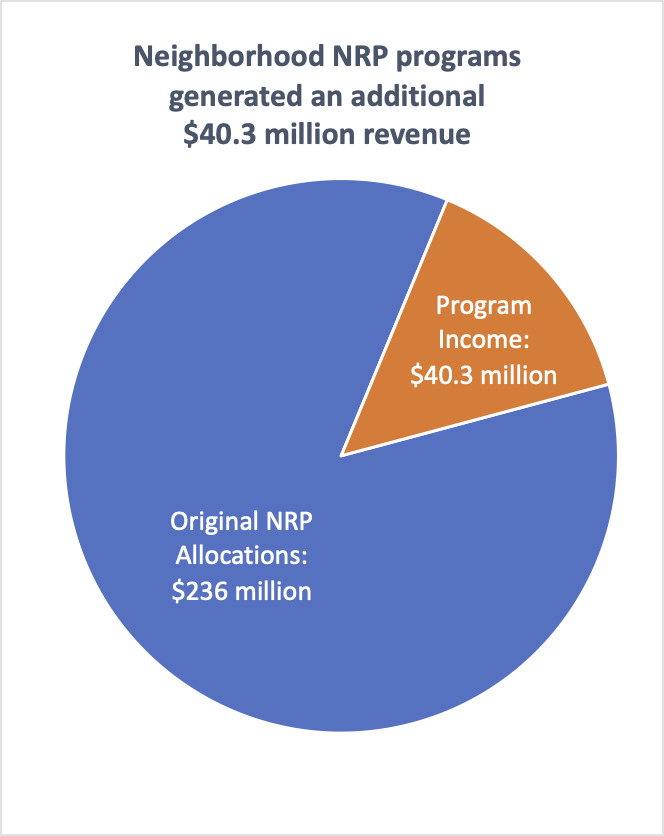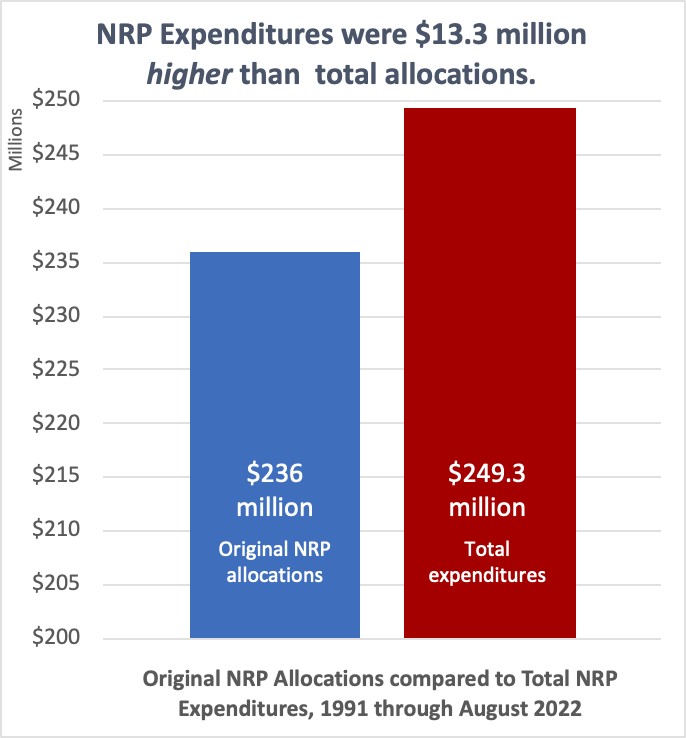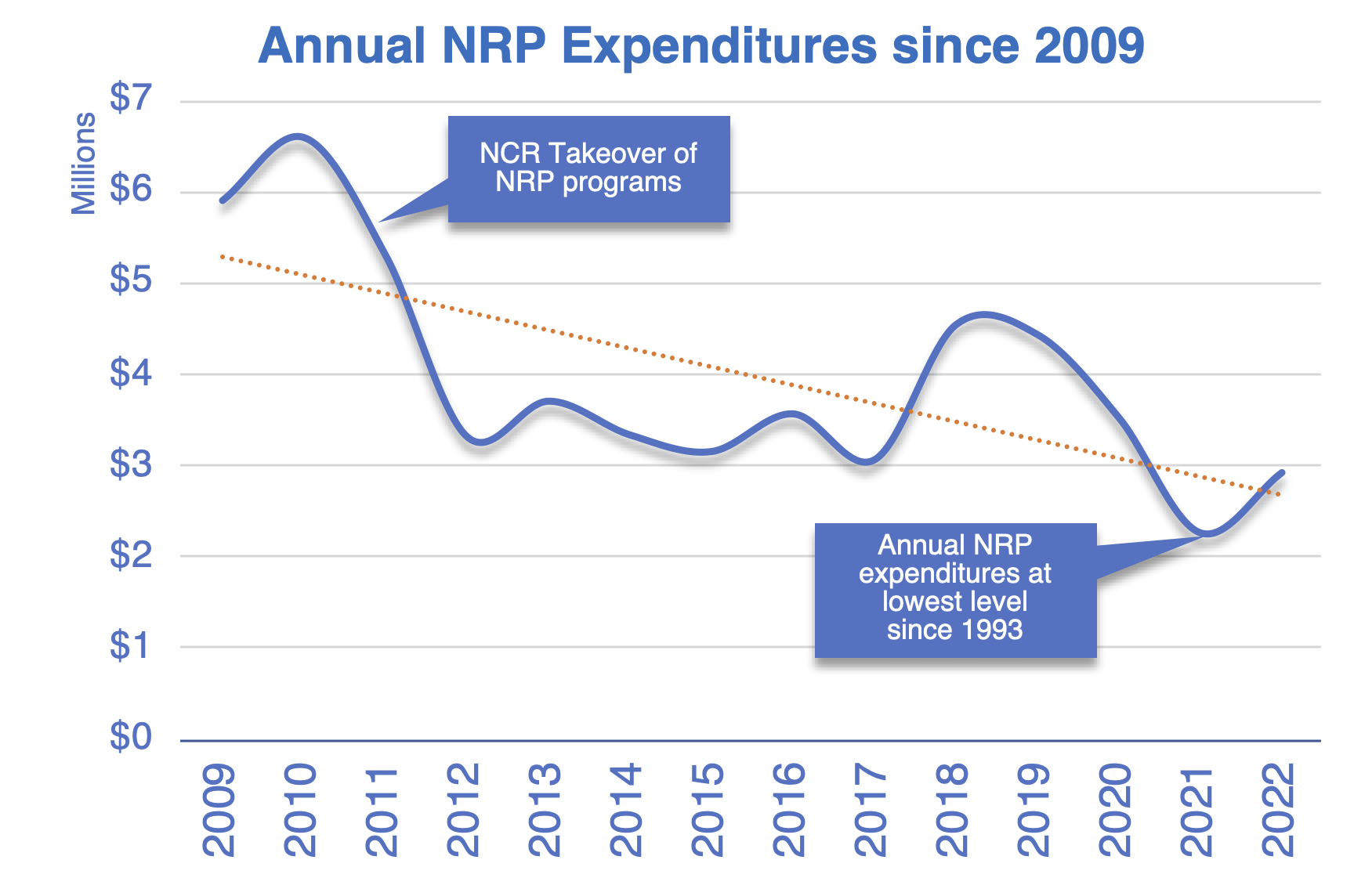NCR has failed to help neighborhood organizations utilize NRP funds
In 2011, the Minneapolis Neighborhood and Community Relations Department (NCR) took over management of the award winning Neighborhood Revitalization Program, or NRP. Prior to the NCR takeover, neighborhood organizations worked with the NRP program to develop and implement neighborhood action plans.
Unfortunately, the data shows that NCR has failed to follow through in continuing the important work of assisting neighborhood organizations with continued implementation of their neighborhood action plans, with the result that millions of dollars of NRP funds are going unused.
Background:
Neighborhood Action Plans were ten year plans, developed by neighborhood organizations through a resident-led, grassroots planning process. Between 1991 and 2017, the NRP Policy Board and City Council approved almost $236 million to fund 139 neighborhood action plans. This includes NRP Phase 1 and NRP Phase 2 funds, as well as Phase 2 reserve funds.
Additionally, neighborhood NRP programs, mostly housing programs, generated $38 million in additional revenues (see Chart 1 at right).
As a result, as of the end of August 2022, NRP expenditures have totaled $247 million, a total of $13.3 million higher than original NRP allocations (see Chart 2 at right). By around the end of August 2021, the NRP fund balance stood at a little over $27 million (See Table 1 at right).
Highlights:
- Neighborhood NRP programs actually spent $13.3 million more than originally allocated through their NRP plans. They could do this because, since 1991, they generated $40.3 million in additional revenue.
- Neighborhood NRP investments significantly improved the condition of Minneapolis neighborhoods, increasing property values, and improving resident confidence in the City.
- There would be no remaining NRP funds if neighborhood organizations had not generated the additional $38 million in program income.
- Up until 2019, the NRP fund balance was actually very active. In the five years from 2015 through 2019, NRP expenditures were $18.8 million. Program income was $10.7 million, offsetting more than half of all expenditures. So a lot of money was moving out of and back into the NRP fund.
What does the data say?
The NRP program was never a priority for NCR, as demonstrated by the data:
- In the five years before NCR took over NRP, annual NRP expenditures averaged $6.4 million per year.
- In the five years after NCR took over NRP, annual NRP expenditures averaged $3.4 million per year (see Chart 3 at right).
- Since 2019, NRP expenditures have fallen even further, as of August of 2022, NRP expenditures were only $1.8 million. This is the lowest amount of NRP expenditures since 1993 (see Chart 4 at right).
Analysis:
The declining rate of NRP expenditures is not the fault of neighborhood organizations. NRP funds do not just spend themselves. It requires careful attention and work by City staff to help neighborhood organizations understand their NRP funds, and to develop agreements and set up contracts. The fact that NRP fund expenditures fell significantly after the NRP takeover, and even more so in the last two years, shows that this is simply not a priority for NCR.
Current NCR staff do not have the experience required, or apparently the interest, to do this work. None of the NCR staff, from the NCR Interim Director down, have had significant experience managing NRP programs, working with neighborhood organizations to develop scopes of service and contracts, or review or evaluate NRP funds. None of the current NCR staff were involved with NRP planning or implementation at the neighborhood level. They have no experience or understanding of the NRP law, the underlying Tax Increment Finance Law, the NRP Funding Agreement Guidelines or the numerous policies developed over years of managing NRP.
Instead, NCR staff have placed needless barriers in the way of neighborhood organizations allocating and contracting neighborhood funds. Further, they have put a much greater emphasis on bureaucratic paperwork in the most recent neighborhood program guidelines than on utilizing funds to address major issues faced by our communities, such as increasing crime rates, street racing, an opioid crisis, major development, and more.
The City took over NRP assumedly with the commitment to manage the program effectively. However, the data shows that NCR has not taken this responsibility seriously, and has failed neighborhood organizations in serving them.


Table 1: The NRP Fund Balance
| Original Allocations: | $236 million | |
| Program Income: | $40.3 million | |
| Total: | $276.3 million | |
| Minus NRP Expenditures: | $249.3 million | |
| NRP Fund Balance*: | $27 million |
* estimated as of August, 2022



